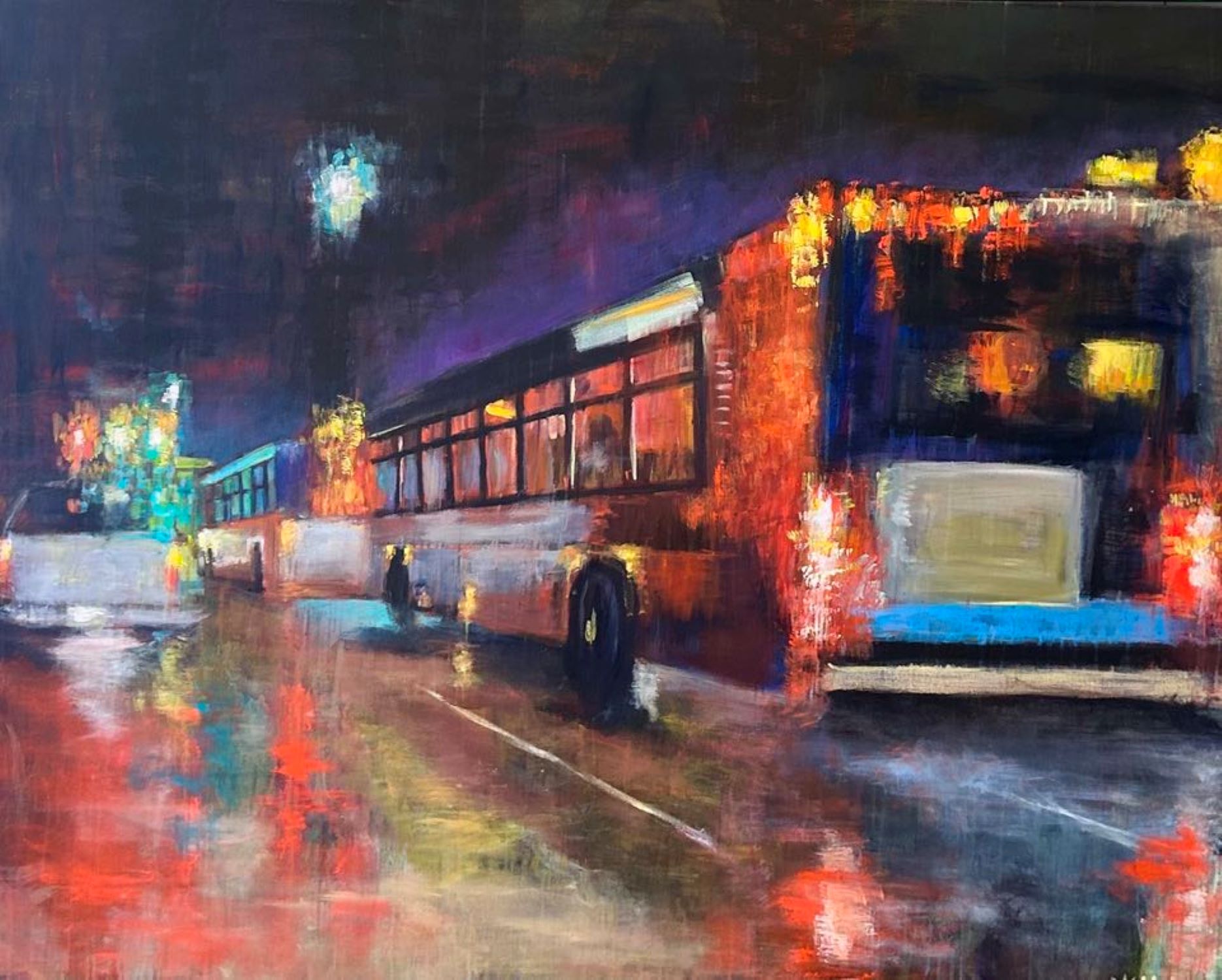We’re excited to introduce you to the always interesting and insightful Leah Kohlenberg. We hope you’ll enjoy our conversation with Leah below.
Leah, appreciate you joining us today. When did you first know you wanted to pursue a creative/artistic path professionally?
I didn’t become an artist until I was 32. Before that, I was a journalist, which is the childhood career I’d always dreamed about.
I worked for small daily newspapers across the US and in Hong Kong, where I helped cover the handover to China in 1997 for Time Magazine. At age 30, I received a scholarship to teach journalism in Mongolia. That was an amazing experience for me, and it turned everything upside down. Mongolia is a beautiful and very artistic country. A lot of journalists were also poets and singers and painters. I began to question whether journalism was still the career for me, but I wasn’t sure what was next.
I returned to the US, got a job as a producer at ABCNEWS.com, and bought an old fixer upper house. Without thinking about it, I began painting the house all kinds of different colours as I renovated the house. I began dribbling house paint on wood from projects and would be captivated for hours.
Right then and there, I decided to become an artist. It was that abrupt, and it’s a decision I’ve never regretted (even though it was hard).


Great, appreciate you sharing that with us. Before we ask you to share more of your insights, can you take a moment to introduce yourself and how you got to where you are today to our readers.
I consider myself a skilled artist and teacher, but I also think of myself as a good little soldier. I put in the hours needed earn a living as an artist. I offer paintings that evoke a contemporary take on urban and rural scenes. I also do commission work, including large-scale murals. I also teach art classes privately, to help anyone who wants to learn to draw and paint. I am very proud both of my skills and flexibility as a painter and teacher, which I have developed through regular studio work over the last 25 years. I have a vast inventory of paintings – at any one time, somewhere between 200 and 300, so people have many choices. I work with people very closely on commission work to make sure they get what they want. With my students, I focus on technique, because like me, I believe that if you want to learn to do art badly enough, you’ll make it happen if you are taught proper form. (Which is how I had to learn, as an adult, when I started painting at age 32). To me, the key words of my brand are tenacity, discipline and an ever-evolving improvement of my art. I embrace the full artist lifestyle.


Are there any resources you wish you knew about earlier in your creative journey?
As an adult who had to learn art, I wished I understood early on the value of taking art classes at the local community level. I never went to art school, because it was expensive and seemed to beat people down with competition, but there is a vast number of excellent artists out there who are teaching – in any community, anywhere in the world. This can happen at local community centers, in artist studios, at community colleges, and continuing education programs at art schools. You can learn great art skills for VERY little money, support a local artist, and learn how to work with materials and draw and paint properly. It’s a win-win!


Do you think there is something that non-creatives might struggle to understand about your journey as a creative? Maybe you can shed some light?
Americans have a strange, very disconnected and romanticized view of art as a business. A certain amount of our Gross Domestic Product figures in the US come from art related business. Yet no one seems to think of artists as workers connected to that result. Instead, artists are viewed as mercurial creatures who don’t care about money and only work when they feel like it. Imagine saying that about, for example, auto-manufacturing – that the people who have the skill level to build a car don’t care about money or only work when they feel like it. That what they do is a “talent” and not a skill. That if they do the work daily, and find parts of it boring, they must not be doing the right thing.
The reality is that working artists work as hard, if not harder, than folks in regular jobs. That’s because much of the work we do is on “spec” – meaning it sells when it sells, unlike a normal worker who puts in the hours and gets paid for those hours. So artists need to find other ways to bring in income while also figuring out ways to get work into the marketplace. And that marketplace is constantly having to be reinvented by the artist. What works one year, or several, doesn’t necessarily work forever.
I love being an artist, and I am proud of my strong drive and work ethic and I love selling my artwork. But yes, sometimes the work can be boring and tedious (so I listen to audiobooks, or watch a movie while painting). That doesn’t mean I’ve lost the joy of it. That means I am embracing the parts of the job that are not always fun – just like any worker, in any job.
Contact Info:
- Website: https://www.leahkohlenberg.com
- Instagram: @leahkohlenberg
- Facebook: https://www.facebook.com/leahkohlenbergoriginalart
- Linkedin: https://www.linkedin.com/in/leah-kohlenberg-1918802/
- Youtube: https://www.youtube.com/@artatworkartclassarchive7058




